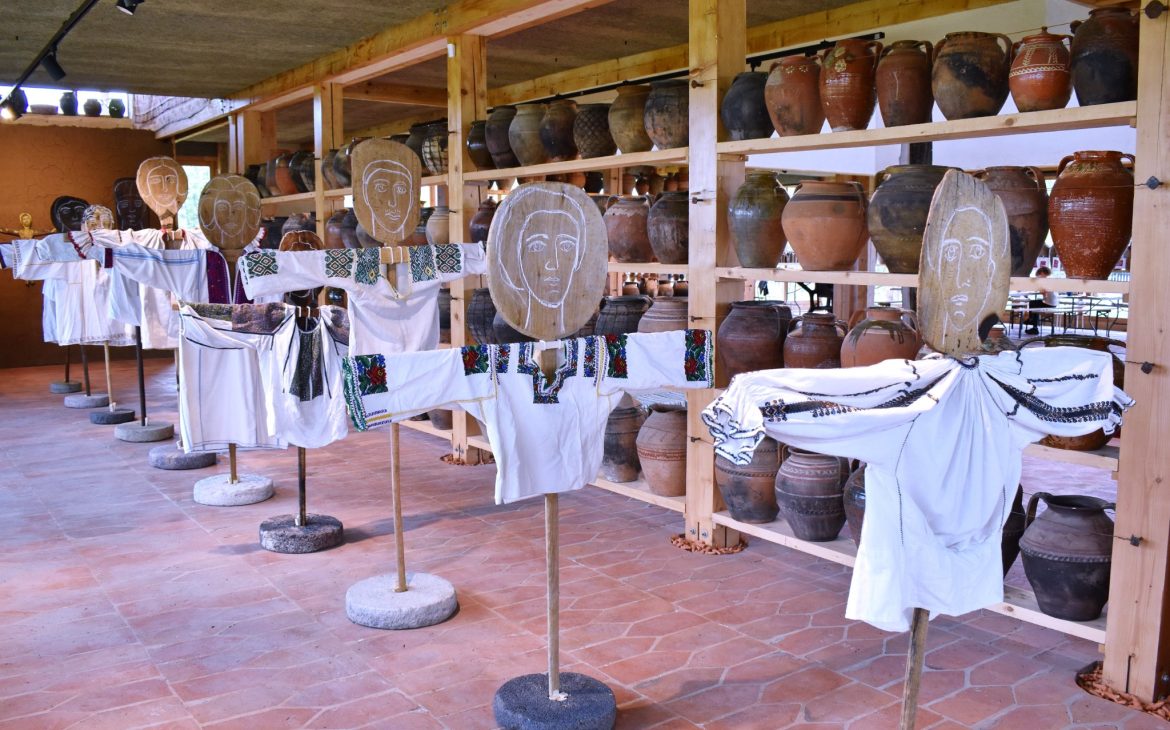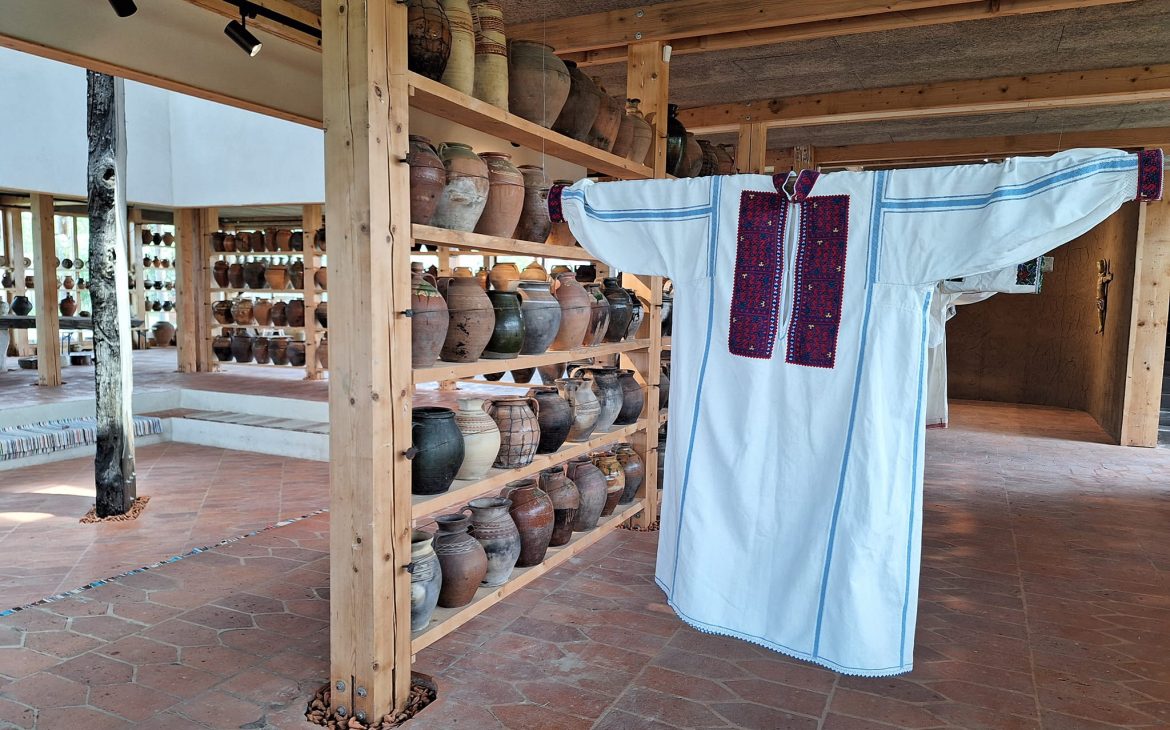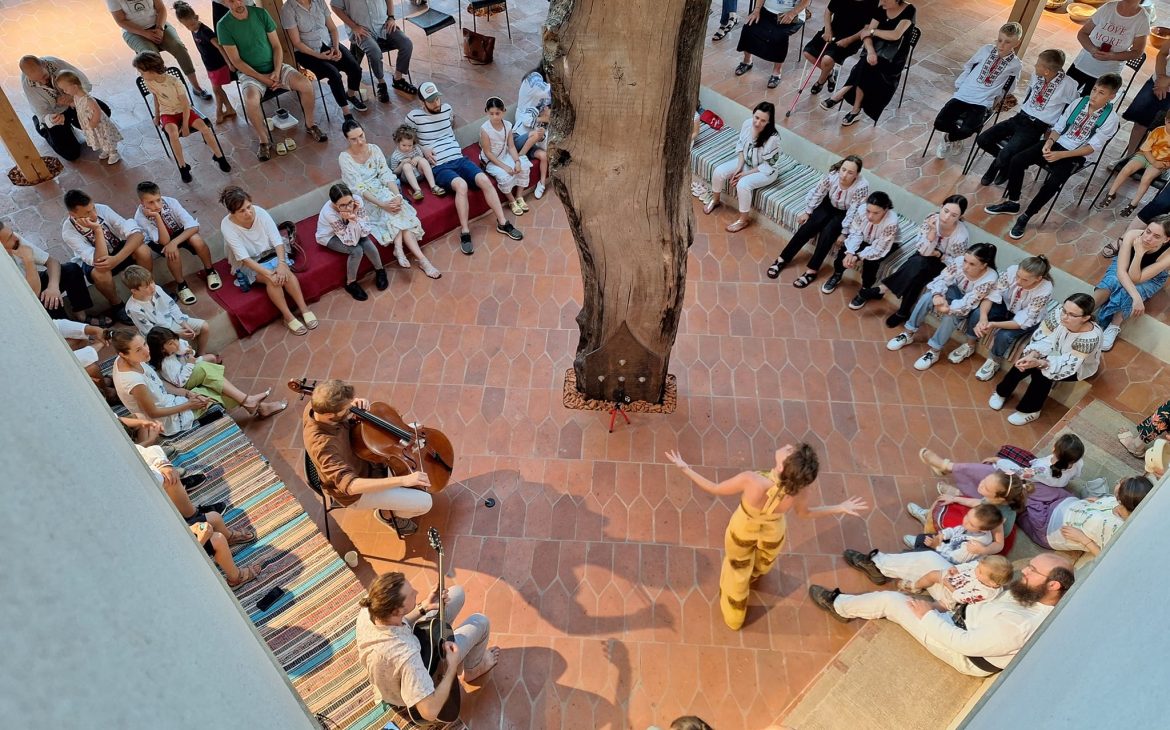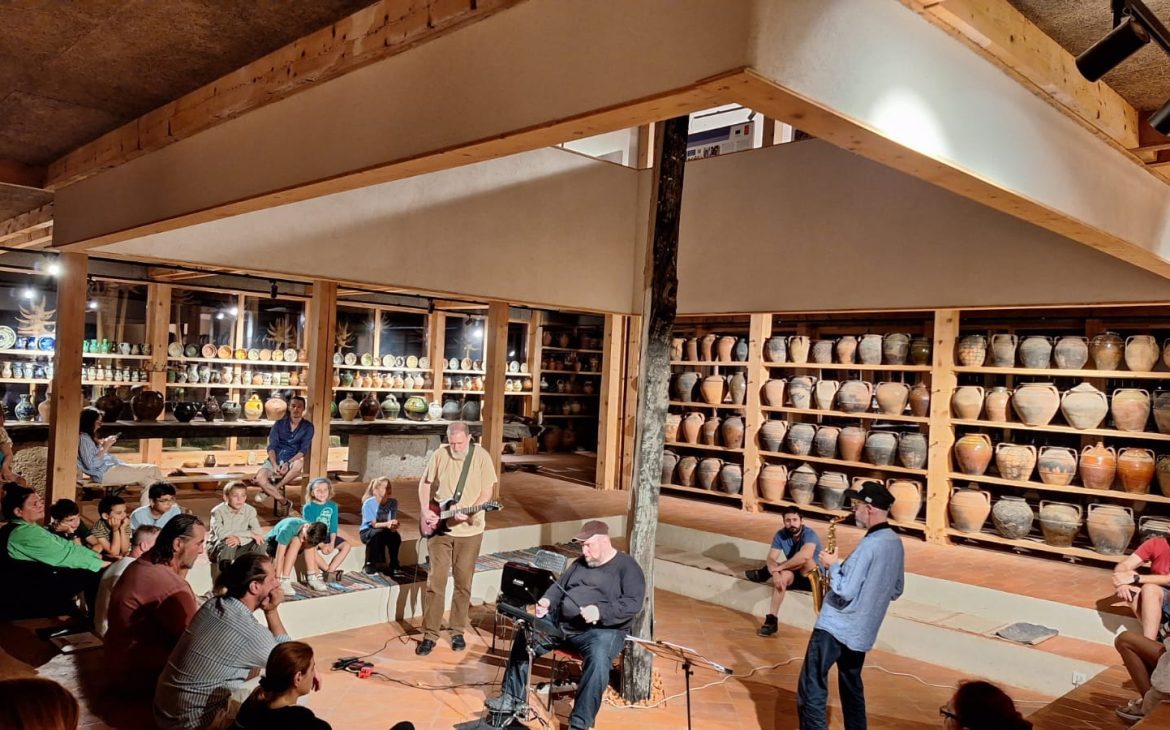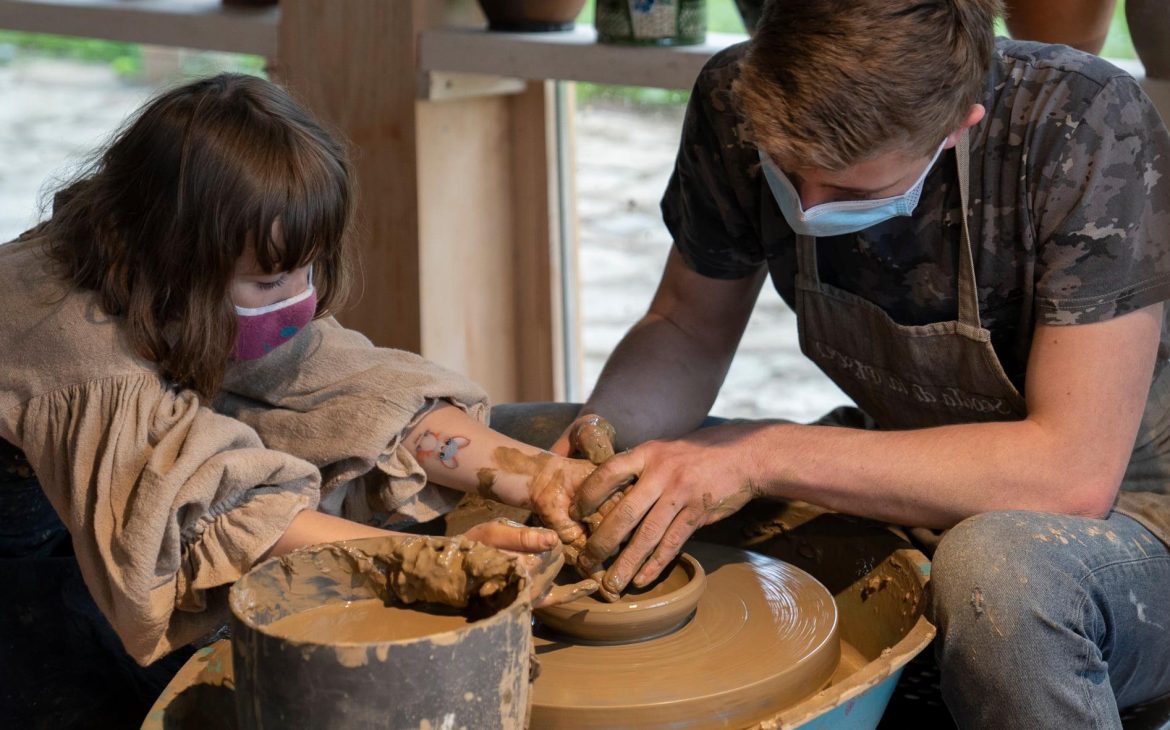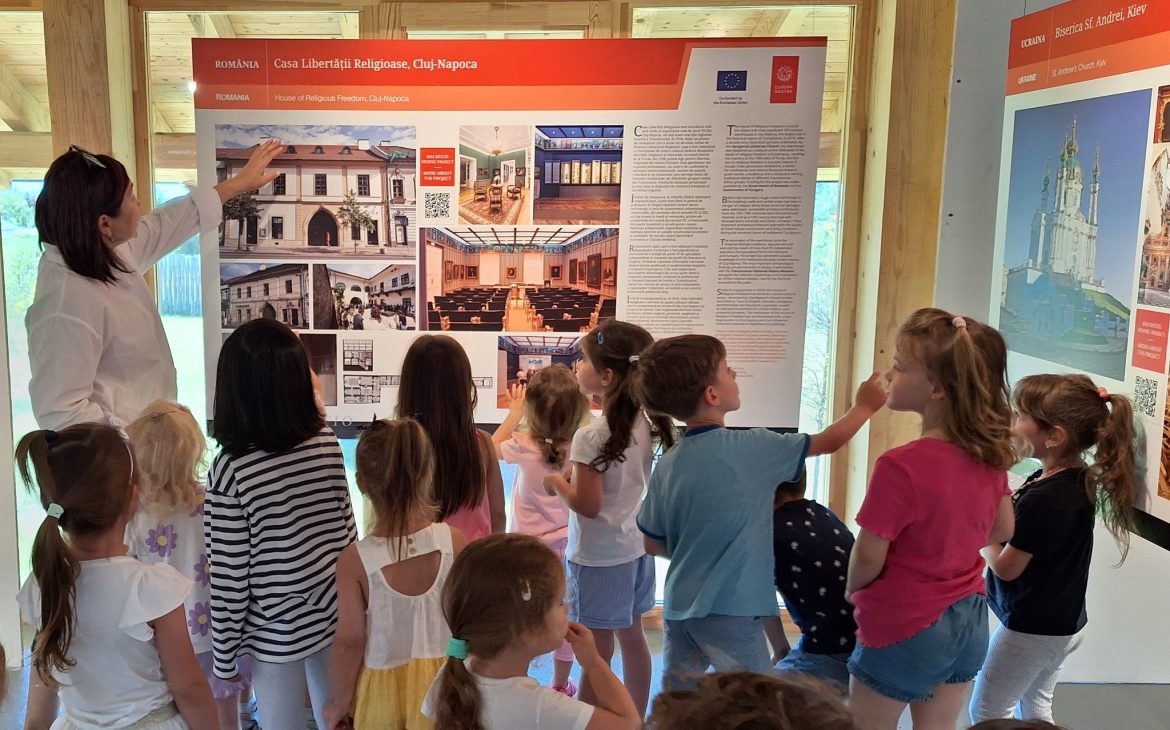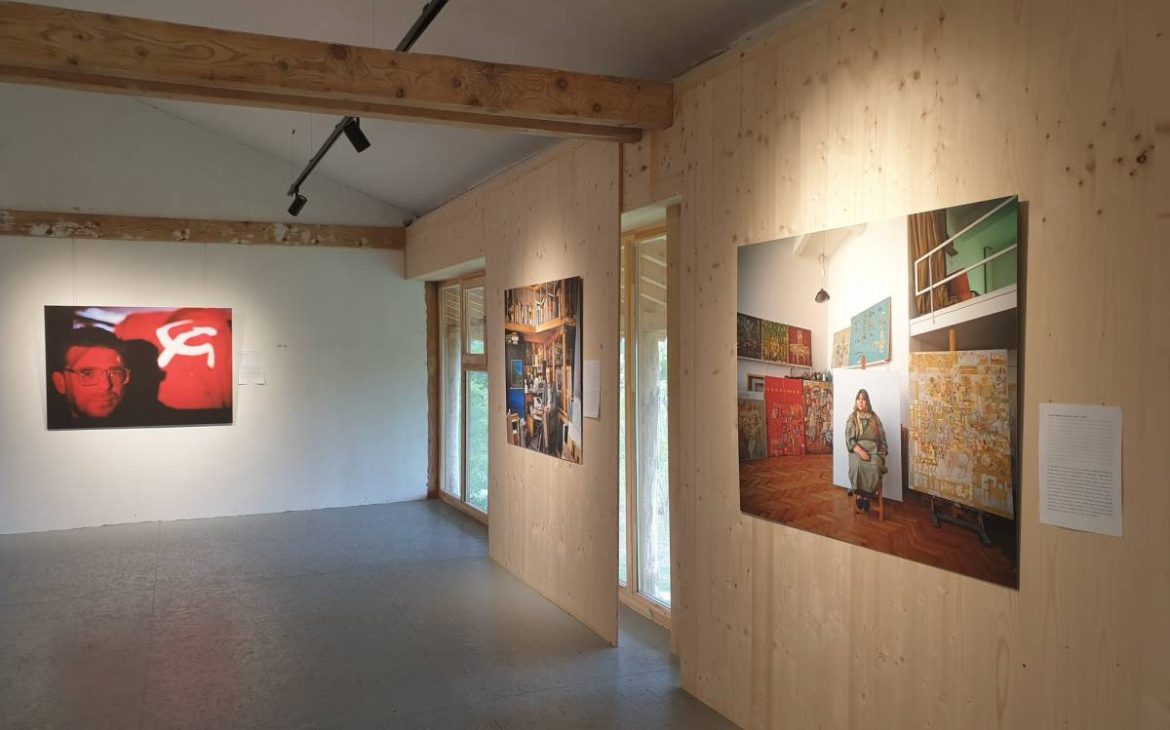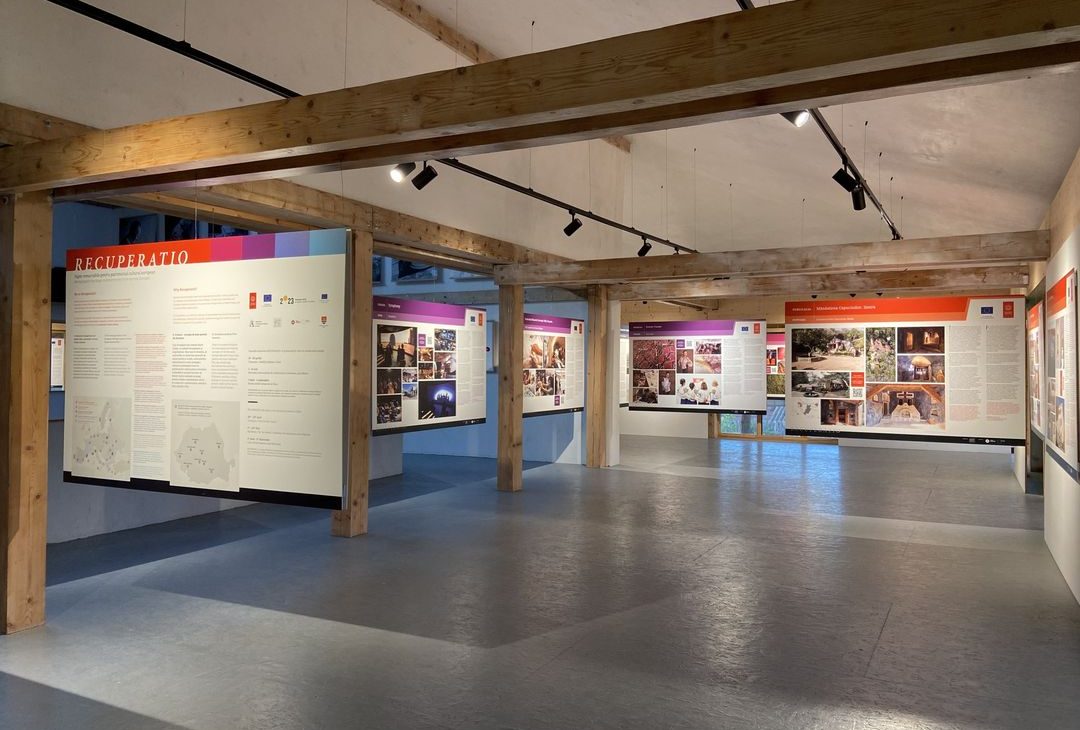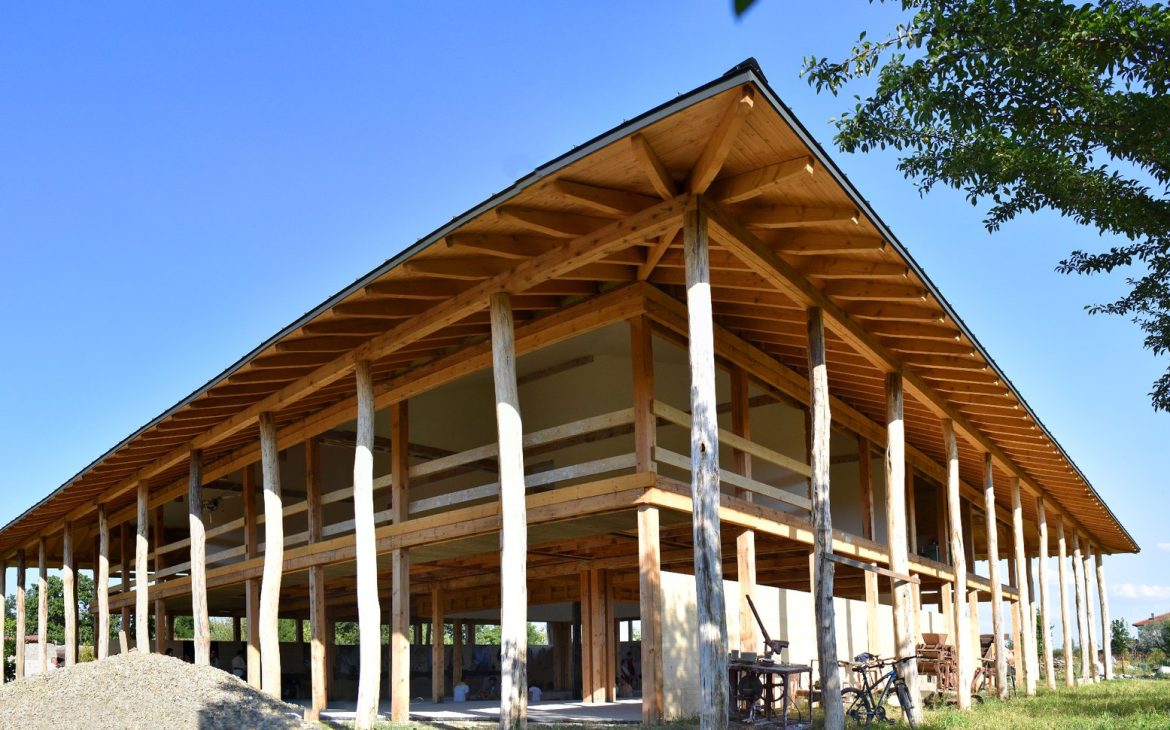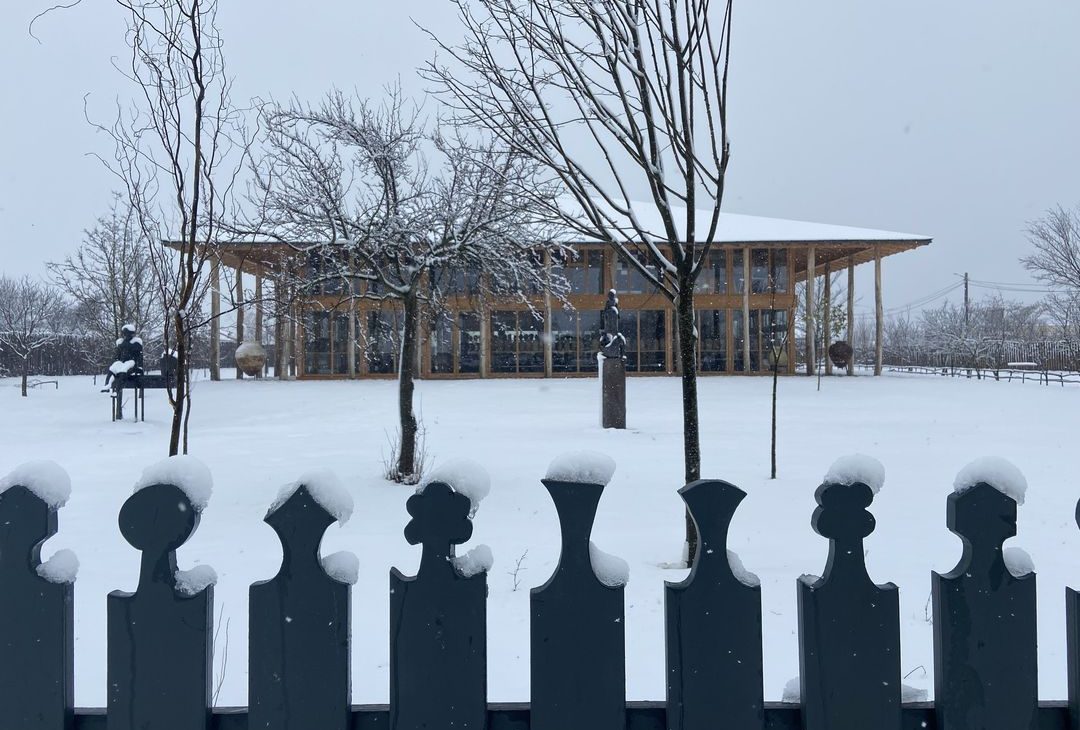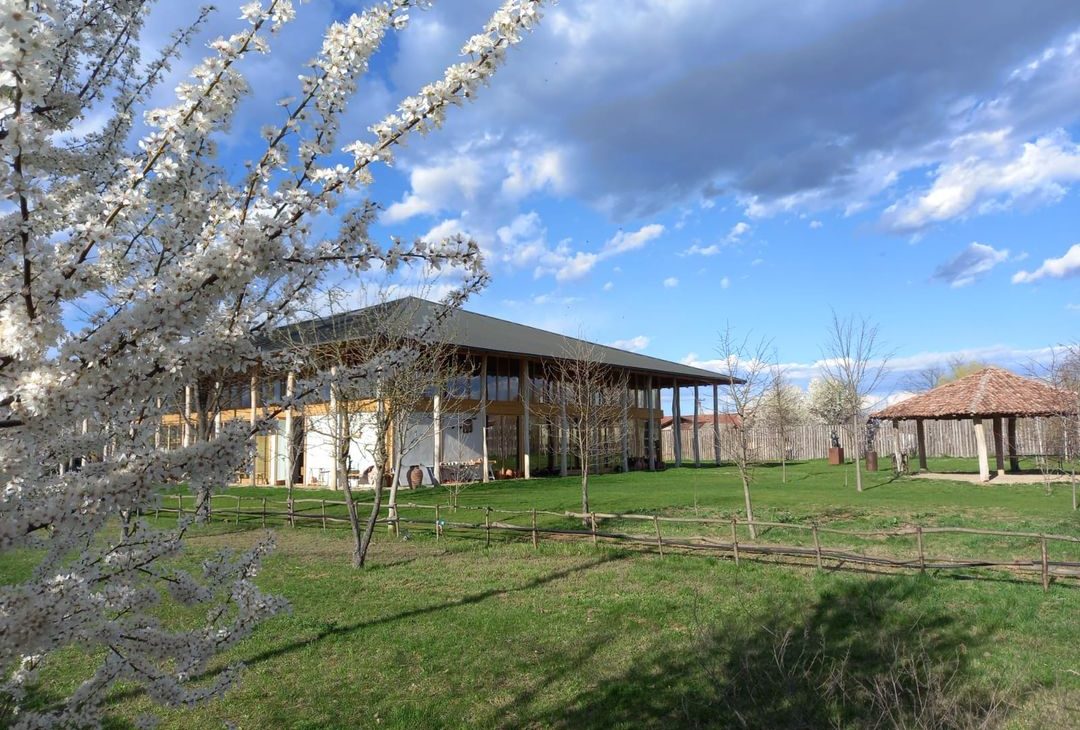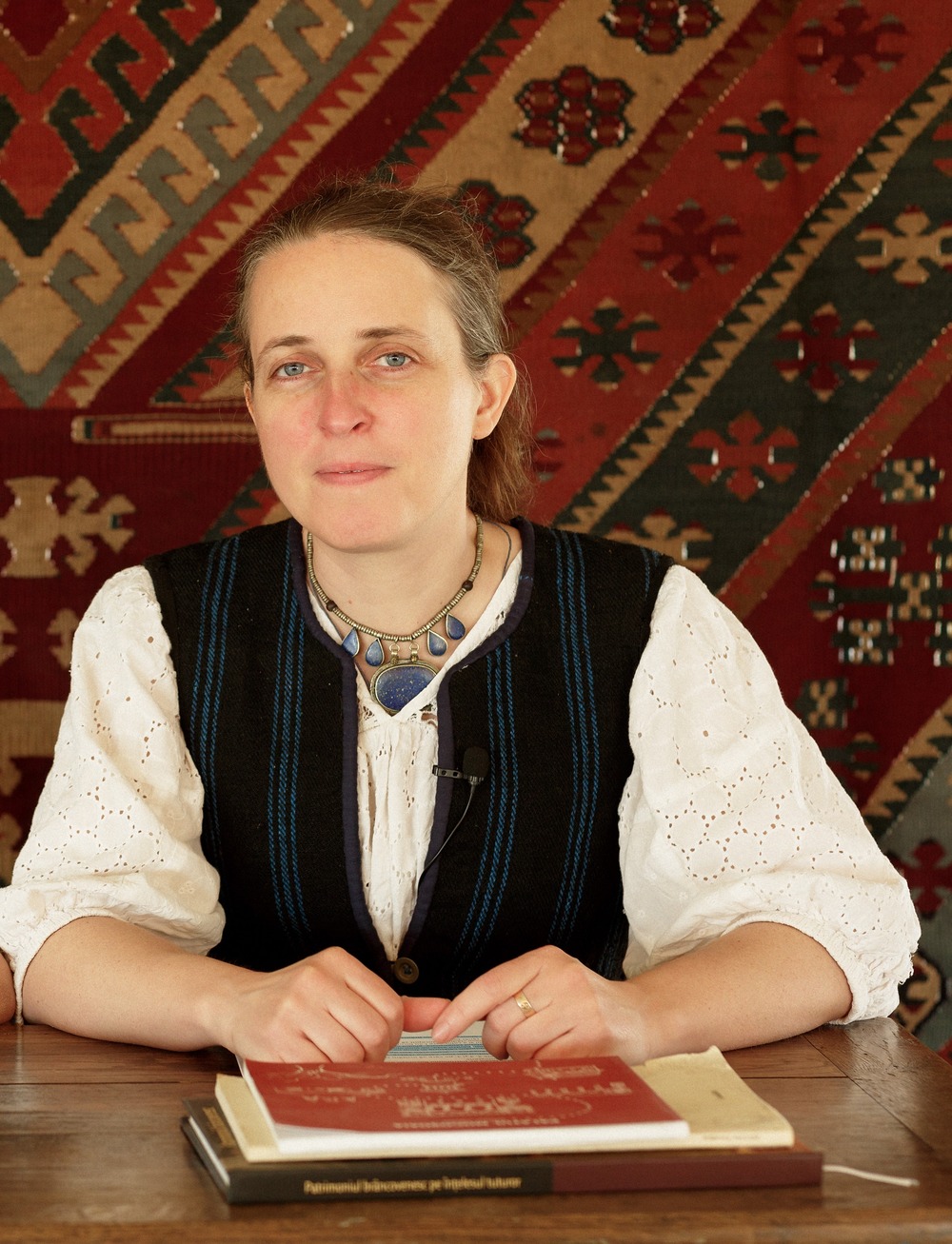Interview conducted by Ileana STANCIU
Inspired by a deep love for cultural heritage, the sculptor Virgil Scripcariu and his wife, Adriana Scripcariu, an art historian, built the Piscu School Museum and Workshop in the heart of a former potter’s hearth in the village of the same name, located 40 km of the capital, in Ilfov county.
Opened in 2021, the Piscu School Museum and Workshop brings to the public’s attention an unprecedented selection of traditional ceramics of local and national origin. At the same time, this cultural project aims to keep the local heritage alive by practicing traditional customs in the workshops offered to museum visitors: pottery, painting on ceramic vessels and linocut. Like a poem, the museum has its inner rhythm, urging the viewer of the peasant artefacts to patience and self-inquiry about their own identity.
Moreover, the museum also includes an exhibition space dedicated to contemporary art. Throughout the three years, the museum hosted various artistic and educational events, such as “Iea Day”, exhibition openings, such as “War and Peace”, performances, conferences, and concerts, such as the “Music Festival Experimental TEXTURAL”.
The cultural endeavour of the Scripcariu family has been awarded two prestigious awards to date: the “Built Architecture – Public Architecture” section prize in 2021, within the Architecture Annual, and the “European Heritage Award” in the Education, Training & Skills category from the 2022 Europa Nostra Awards.
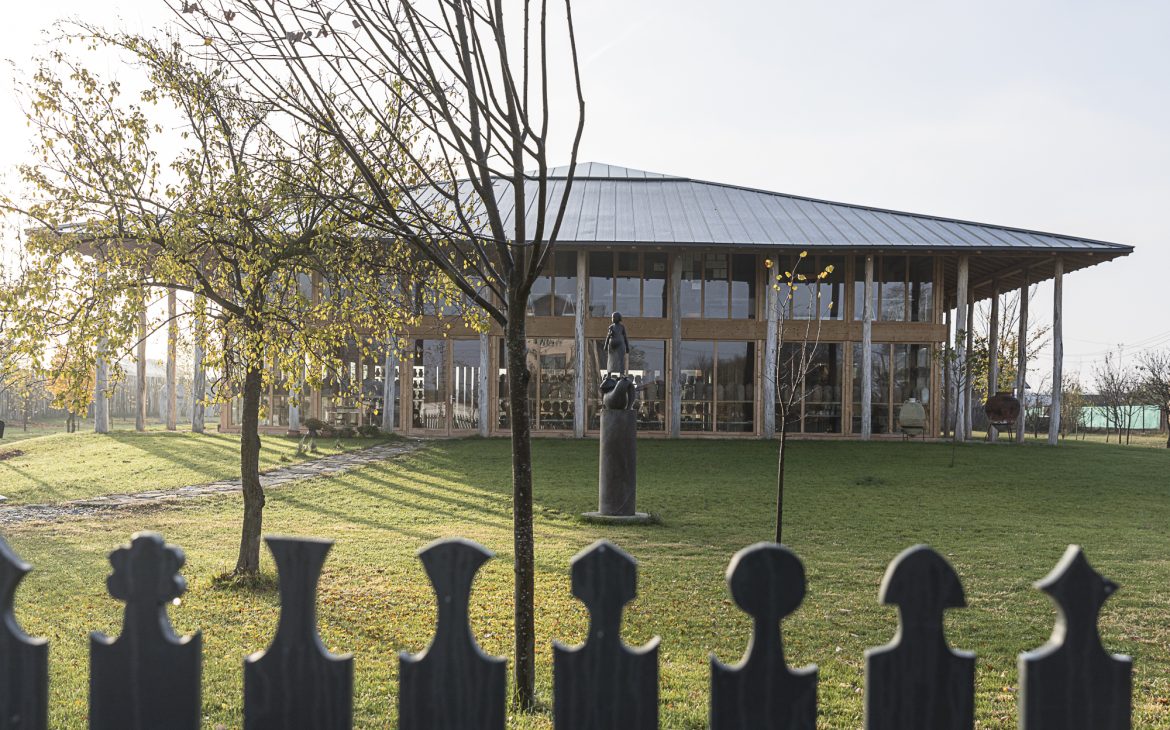
The Piscu School Museum and Workshop came from your love for heritage and your husband, the sculptor Virgil Scripcariu. How was the idea of a museum of traditional pottery born?
It was born organically, from a biographical context. Here, we settled in a former village of potters; it was a providential event, I would say, for us, but also for the horizon of this local heritage, which we found numb, asleep, rather despised by its community. Of course, for an art historian and a sculptor, arriving in a village of potters, the context is a great challenge; you cannot remain indifferent. First, the fascination of the objects, the stories of the people, the kilns, all these things that you feel should be noticed and taught to our fellows, mainly art lovers and not only; ethnographic heritage has this extraordinary gift of resonating, more than other types of art, even with people who have nothing to do with the field, because it is, in fact, connected to the biography, to the childhood, to the feelings of each of those who they once lived in the countryside, and this, happening 30-40 years ago, was necessarily linked to an area of traditional artefacts, which today is slowly, slowly, disappearing. And then, the lovers of such an approach here are more spontaneous than those of a contemporary art museum.

The museum was a conclusion of the 15 years spent in Piscu. In 2006, we settled in Piscu, and in 2021, we opened the museum; so there were 15 years of research, collecting artefacts, we started working with the children from the community, and this generated a type of workshop that we later offered to those who came from outside the community. In short, things came together in such a way that, somewhere around 2016, I felt that a museum was needed.
We hadn’t proposed something like this from the beginning; no way, it simply asked itself. It was requested by the public, and it was requested by the progress of the project; sure, it started in our yard, but from a certain point, it needed a space and a time dedicated entirely to the story, to the display of artefacts, but also to receiving groups of visitors. At the museum, we have this time, Saturday and Sunday are days when the museum is open for individual visits. Otherwise, we receive many groups of children. That’s how, effortlessly and organically, the idea of the Piscu School Museum-Workshop was born. It has already been operating for a year and a half and is very much loved by the public.

What challenges did you face in setting up the museum, and how did you overcome them?
The main challenge was, of course, how to finance such a project, because we are a very small NGO, our human and material resources are small; therefore, we could not afford a European project from any point of view; we knew that could not be a solution for us, and then, with a lot of confidence and enthusiasm that proved to be contagious, we tried to find resources little by little, among friends, among local visitors, private individuals, small and medium-sized companies, people who wanted to contribute to the construction of this space, this museum, which, I would say, was born from the desire of a community-generated ad hoc by the story of Piscu.
The museum was actually built with resources gathered little by little. We invented all kinds of campaigns, trying to put everything we used to produce at the museum’s service, from books to engravings to sculpture; for 2-3 years, everything was set at the benefit of this project. We had the Your engraving for the museum campaign, the Your book for the museum campaign, the Your meter for the museum campaign, in which we invited various acquaintances to purchase a cubic meter needed to build the museum – we had to collect 80 cubic meters of wood to start the construction site -, and I was offering a workshop with friends in Piscu instead. It was a very creative approach, which, surprisingly, made it possible to construct such a building.
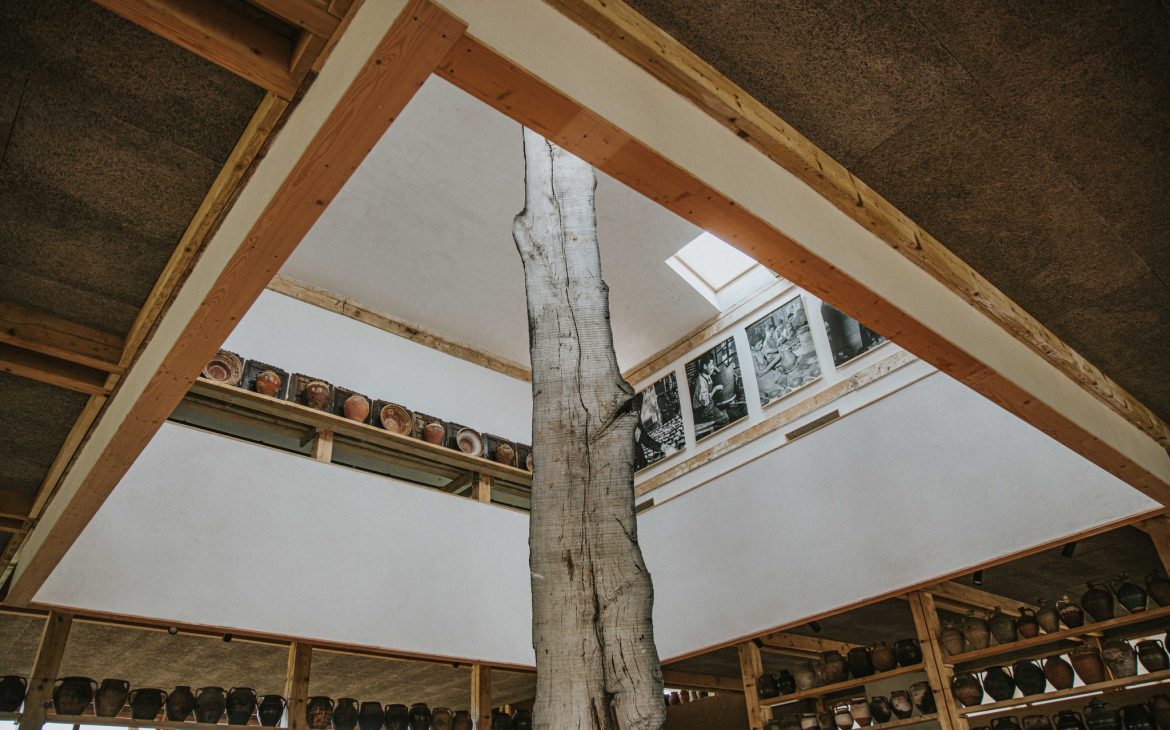
I must mention a significant contribution that the architects’ guild made through its representatives, students, and teachers because the museum project started from the benches of the “Ion Mincu” University of Architecture and Urbanism in Bucharest. It was initially a semester project of a group of students, led by architects Cosmin Pavel and Mihnea Simiraș, in the class of Professor Ștefan Ghenciulescu. The museum’s model was born there, the first project, which is very close to what was done on the site.
The design was carried out in detail by Cosmin Pavel and Cristina Constantin. They were the ones who also watched the construction site; the students also participated in the building of the museum at certain stages, and for them, it was an opportunity that rarely happens, that what you design, as a learning exercise, is put into operation and, in the end, you can come on the weekend with friends to enjoy an edifice in the construction of which you participated.
We are very grateful to this group of architects who supported the building of our museum and, as a part of our appreciation, the students from the Architecture universities have free entry to the museum; with great pleasure, we often host events organised by architects, and we are delighted that the space is loved and adopted by this guild. It was also awarded in 2021 at the Architecture Annual, organised by the Romanian Order of Architects, with the distinction of Best Building of Public Interest. We were very happy for the architects because it was a prolonged volunteer project that required a lot of commitment, and this award was their reward for all the soul they put into our project.
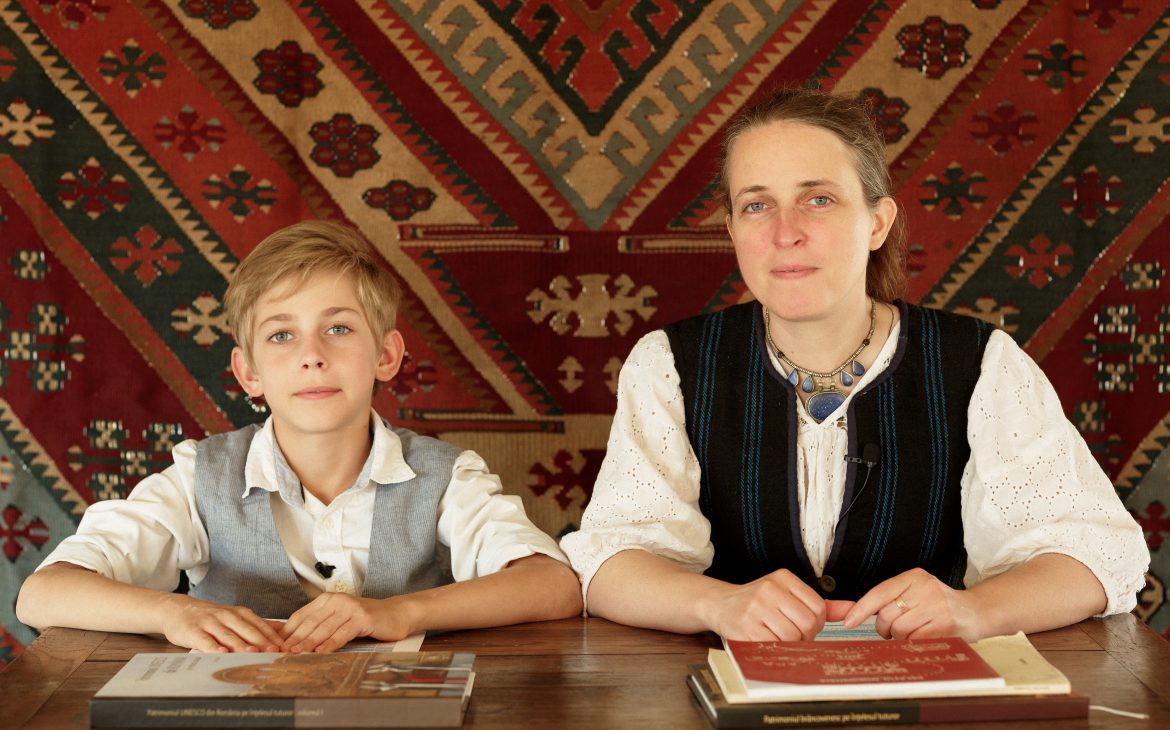
I must also mention the contribution of a larger company; so far, I have mentioned small institutions or private individuals. We also had an essential contribution from Kaufland Romania. They were joking like that – our museum has a square footprint – and they said, look, you had a box, and we came and put the lid on it. It was a little different; the cover was already there – the roof – but there was no window or installation area, without which we could not open the museum to the public. When Kaufland appeared on our landscape, the museum was a big pavilion, charming even at that stage but impractical in winter or other contexts. With the help of Kaufland, we closed the museum with glass, and anyone who has been to Piscu knows that natural light is present in the museum at all times, it is practically a building with glass walls. Kaufland Romania brought these, and we are grateful for this support.
We also had significant contributions from the “Ivan Patzaichin Mila 23” Association, which strongly supported our project.

What would you like this museum to inspire visitors to do?
For us, this space is a place where we try to train the public to visit the museum in general. I mean especially children. It is a friendlier place, a little more relaxed than other museums. It is a place where, for example, we don’t have showcases. The objects are very close to the visitor. We have an amphitheatre in the center of the museum, where we can gather and tell stories; we have a playful and tactile area where children can play freely with clay toys. Finally, it is a space where children usually feel good, but we try to use this mood to explain a little about visiting the museum.
From the very beginning, we set some clear rules that we defined and tried to help them feel that the museum is a place where we discover a story. In this space, we find history, a context where we can get inspiration and express ourselves creatively. We have an area of the museum dedicated to workshops, which the children access fervently and should indeed exist in any museum adapted to the specific heritage. Our visitors can be initiated into three artistic and craft pursuits: raising pots on the potter’s wheel, ceramic painting and linocut.
The Piscu Museum is a space where we hope to contribute to the formation of generations closer to museums, closer to cultural heritage, more aware that this heritage must be protected and can only live through our attachment and affection. We also want the place to become useful for other projects that are looking for a nest, a place to hold meetings, small concerts, plays, a cultural hub, I would say, with a specific traditional heritage, an original thing, which I see is desired and loved by the public.
How do you bring children closer to the contemporary art exhibited in the museum?
The museum has a temporary exhibition area, which we usually dedicate to contemporary art. I had three exhibitions with various techniques, from sculpture to video installation, object installation, painting, and photography. These three exhibitions led to discussions and attempts to bring children closer to contemporary art.
I will now refer only to the War and Peace exhibition, where I had six artists and six works, each from a different expression family. We had a sculpture by Mircea Roman and paintings by Bogdan Vlăduță, Florentina Voichi, and Daniel Cauia. We also had a video installation with Mircea Cantor and an object installation by the sculptor Virgil Scripcariu, the creator of our museum’s permanent exhibition and the project leader.
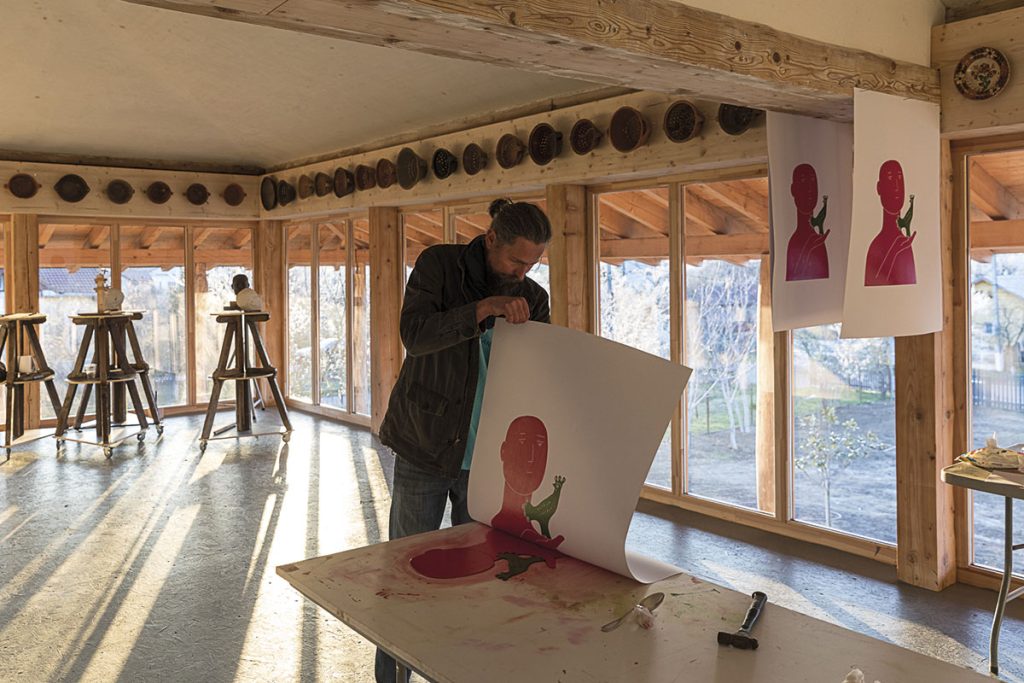
Each of these works was an opportunity to help the children penetrate a little this type of expression that contemporary art has, to break specific image decoding clichés that they involuntarily acquire from all the image avalanche to which they are subjected daily, from the media, from the advertising area. They are visually assaulted and, at some point, shaped by the universe they willingly or unwillingly frequent. And then you can’t expect them to understand, resonate, or even respect contemporary art without an effort to explain to them a little how we read these works of art. And once you open this box with them, children are very receptive and sensitive, and you can win them over.
Mircea Roman’s work, Pieta, generated countless discussions. In this work of deep drama, the female character, naked to the waist, holds the wounded male character in her lap, in obvious suffering, indeed an interpretation of the classic composition Pieta. The children laughed because the character was naked to the waist, which was terribly funny to them. They couldn’t connect. Then, I would place them around the work like this, in a circle, and I would somehow try to extinguish this first reaction and help them understand. I asked them to look at the faces of the characters first and invited them to find keywords, which, of course, took us into an already serious area: “suffering”, “love”, “fear”, and “helplessness”.

Finally, we connected somehow the exhibition approach and the current historical context, the war in Ukraine. After about 10 minutes of discussions and attempts to bring them to the reality of the artwork in front of them, the atmosphere changed 180 degrees, and the children began to understand and empathize with the characters’ plight. Children need this guidance.
Then we had three paintings: an abstract painting by Florentina Voichi, a slightly expressionist approach by the Bessarabian painter Daniel Cauia, and a conceptual work signed by Bogdan Vlăduță. The three pieces helped me uncover different types of expression and possible keys to understanding these works. And here, already three works with which we give them some tools. I hope that, after the meeting with the exhibition in Piscu, the children who will go to a museum in the future, maybe they will understand more, perhaps they will know, first of all, that a work of art needs to be taught about, needs to be passed through the mind and my soul as a receiver, a dialogue partner of the artist.
The work that brought the children the most joy was that of Virgil Scripcariu, entitled Car, an object installation the artist constructed from ethnographic pieces, a large, old wooden bed on four wheels, which the artist filled with wheat, and in this wheat were placed loaves of bread, which had pencils stuck in them, in the form of toy war machines. It was, in fact, about war, playing war, resources, and fleeing war, all together, accompanied by a text that the artist wrote with charcoal on the wall in the vicinity of the work.
Children were allowed to play with this wheat, put their hands on it, enjoy the texture of the wheat grains, and handle the pieces in the bed. Of course, during this game, I would tell them a little about what it was about; if they were older, I would even read them the text written by the artist. This is how we consider bringing children closer to contemporary art at the Piscu School Museum and Workshop.
